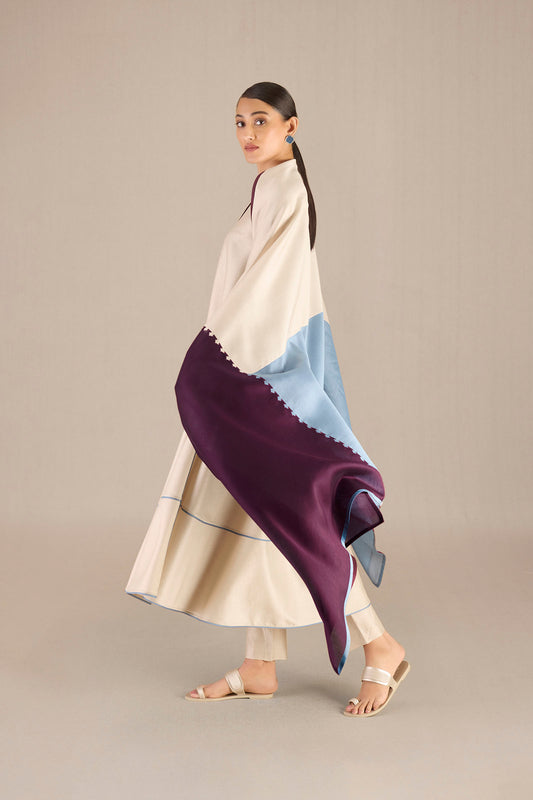Designer kurta sets for women are more than just clothes; they’re a reflection of your style and personality. Whether you’re donning a vibrant designer kurta set or a graceful designer anarkali suit, taking proper care of these garments ensures they stay beautiful for years. In this guide, we’ll share easy and effective tips to help you care for your designer kurta sets so they remain as stunning as the day you bought them.
Table of Contents
| Sr# | Headings |
|---|---|
| 1 | Introduction |
| 2 | Understanding Fabric and Materials |
| 3 | Reading Care Labels |
| 4 | Pre-Wash Precautions |
| 5 | Hand Washing Your Kurta Set |
| 6 | Machine Washing Tips |
| 7 | Drying Techniques |
| 8 | Ironing and Steaming |
| 9 | Storing Your Kurta Set |
| 10 | Handling Stains and Spills |
| 11 | Professional Cleaning |
| 12 | Caring for Embellishments |
| 13 | Maintaining Color and Fabric Integrity |
| 14 | Traveling with Designer Kurta Sets |
| 15 | Conclusion |
Understanding Fabric and Materials
First things first, let’s talk about the fabric. Designer kurta sets for women come in various materials like silk, cotton, chiffon, and georgette. Each fabric needs a different care routine.
Types of Fabrics
- Silk: Luxurious and delicate, usually requires dry cleaning.
- Cotton: Durable and breathable, can handle regular washing.
- Chiffon: Lightweight and sheer, needs gentle hand washing.
- Georgette: Slightly textured and flowy, best washed by hand or dry cleaned.
Knowing your fabric helps you choose the right care methods.
Reading Care Labels
Care labels are like cheat sheets for your clothes. They tell you how to wash, dry, and iron your designer kurta set. Ignoring these labels can lead to disasters like shrinkage or fading.
Key Symbols to Recognize
- Washing: Hand wash, machine wash, or dry clean only.
- Drying: Tumble dry, line dry, or lay flat to dry.
- Ironing: Temperature settings and whether you can use steam.
Always follow the care labels closely for the best results.
Pre-Wash Precautions
Before you toss your kurta set in the wash, take a few steps to prepare.
Color Fastness Test
Dampen a small, hidden part of the garment and press a white cloth on it. If the color transfers, stick to dry cleaning.
Checking for Embellishments
Look for beads, sequins, or embroidery. Turn the garment inside out to protect these areas during washing.
Hand Washing Your Kurta Set
Hand washing is often the safest method, especially for delicate fabrics and intricate designs.
Steps for Hand Washing
- Fill a Basin: Use cold or lukewarm water with a mild detergent.
- Soak Gently: Submerge the garment and gently swirl it.
- Rinse Thoroughly: Make sure all soap is out.
- Press Out Water: Gently press out water without wringing.
Hand washing helps maintain the fabric’s quality and the beauty of embellishments.
Machine Washing Tips
If your care label allows machine washing, follow these tips to avoid damage.
Using a Mesh Bag
Place your kurta set in a mesh laundry bag to protect it from getting tangled or snagged.
Selecting the Right Cycle
Use a gentle cycle with cold water and a mild detergent. Skip the bleach and harsh chemicals.
Drying Techniques
Proper drying keeps your kurta set looking great and lasting longer.
Air Drying
Air drying is safest. Lay your garment flat on a clean, dry towel or hang it on a padded hanger in a shaded area.
Avoiding Direct Sunlight
Direct sunlight can fade colors and weaken fabric. Always dry in a shaded, well-ventilated spot.
Ironing and Steaming
Keeping your kurta set wrinkle-free is key to looking sharp. Here’s how to do it right.
Ironing Tips
- Silk and Chiffon: Use a low heat setting and place a thin cloth between the iron and the fabric.
- Cotton: Can handle higher heat but start low.
- Embellished Areas: Avoid ironing directly on embellishments. Use a pressing cloth or iron around them.
Steaming
Steaming is a great alternative, especially for delicate fabrics. Hold the steamer a few inches away and move it gently to remove wrinkles.
Storing Your Kurta Set
How you store your kurta set can affect its longevity.
Hanging vs. Folding
- Hanging: Use padded hangers for structured fabrics like silk and cotton to avoid creases.
- Folding: For heavy, embellished garments, folding is better. Use acid-free tissue paper to support the folds.
Storage Environment
Store in a cool, dry place. Avoid direct sunlight and moisture. Garment bags can protect from dust and pests.
Handling Stains and Spills
Spills happen, but quick action can prevent permanent stains.
Immediate Action
- Blot, Don’t Rub: Use a clean cloth to blot gently.
- Cold Water Rinse: Rinse with cold water to stop the stain from setting.
Stain Removal Techniques
- Oil-Based Stains: Use a small amount of dish soap and gently work it into the stain before rinsing.
- Wine or Food Stains: Blot with a mixture of water and mild detergent.
Test any stain removal method on a hidden area first to avoid damage.
Professional Cleaning
Sometimes, taking your kurta set to the professionals is the best choice.
When to Opt for Dry Cleaning
- Heavily Embellished Garments: Intricate designs and delicate fabrics benefit from professional care.
- Stubborn Stains: Professionals can handle tough stains without harming the fabric.
Caring for Embellishments
Designer kurta sets often feature beautiful embellishments that need special attention.
Protecting Embellishments
- Turn Inside Out: Wash and store inside out to protect beads and sequins.
- Use Soft Brushes: Gently clean embellished areas with a soft brush.
Repairing Loose Embellishments
If beads or sequins come loose, take the garment to a professional tailor to fix them properly.
Maintaining Color and Fabric Integrity
Keep your kurta set looking vibrant and fresh by maintaining color and fabric quality.
Preventing Color Fading
- Wash Less Frequently: Only wash when necessary to avoid fading.
- Use Cold Water: Cold water helps retain color and is gentler on fabric.
Preserving Fabric Strength
- Avoid Overloading Washer: If machine washing, don’t overload to prevent fabric strain.
- Use Mild Detergents: Harsh chemicals can weaken fabric fibers over time.
Traveling with Designer Kurta Sets
When traveling, pack your kurta set carefully to avoid wrinkles and damage.
Packing Tips
- Use Garment Bags: Protect your kurta set in a garment bag.
- Roll, Don’t Fold: Rolling helps prevent deep creases.
Upon Arrival
Hang the kurta set as soon as possible to let any wrinkles fall out. Use a steamer if needed.
Conclusion
Taking care of your designer kurta set for women is easy once you know how. By understanding the fabric, following care labels, and using the right washing, drying, and storing techniques, you can keep your garments looking beautiful for years. With these tips, your kurta sets and designer anarkali suits will continue to impress and make you feel fabulous.
FAQs
How often should I wash my designer kurta set?
It’s best to wash your designer kurta set only when necessary. Over-washing can lead to color fading and fabric wear.
Can I machine wash my designer anarkali suits?
Check the care label first. If machine washing is allowed, use a gentle cycle and place the garment in a mesh laundry bag.
How do I remove stains from embellished areas?
Blot the stain gently and use a mild detergent solution. Avoid scrubbing the embellishments to prevent damage.
Is dry cleaning always necessary for silk kurta sets?
While dry cleaning is safest for silk, you can hand wash if the care label permits. Use cold water and a mild detergent specifically for silk.
How can I prevent my kurta set from wrinkling while traveling?
Pack your kurta set in a garment bag and roll rather than fold it. Upon arrival, hang it up and use a steamer to remove any wrinkles.




